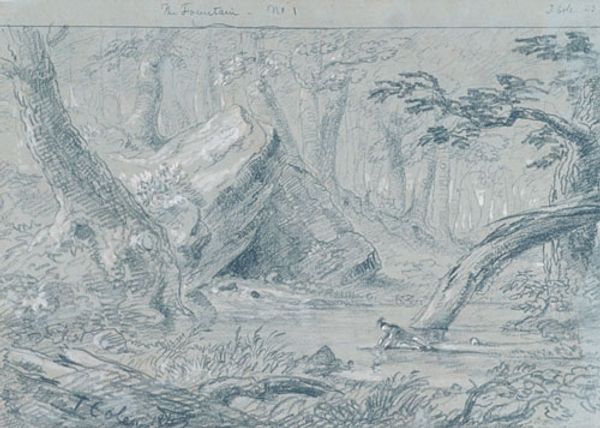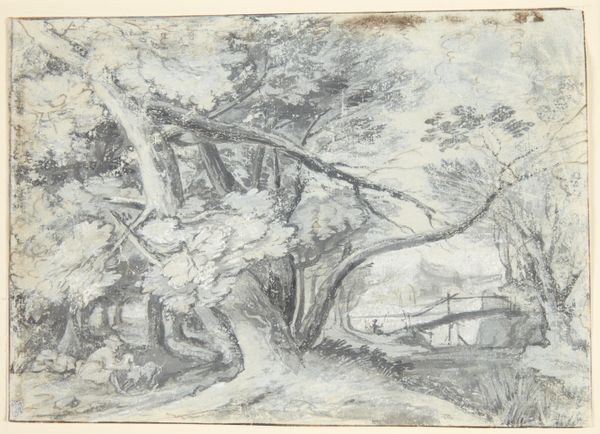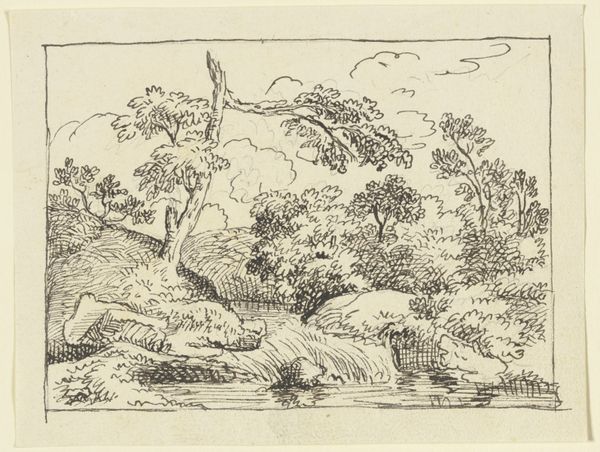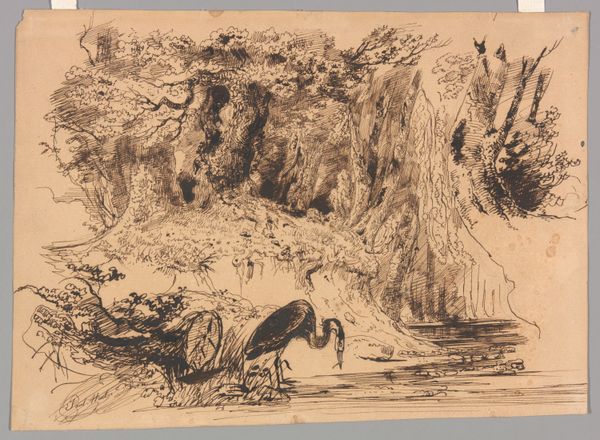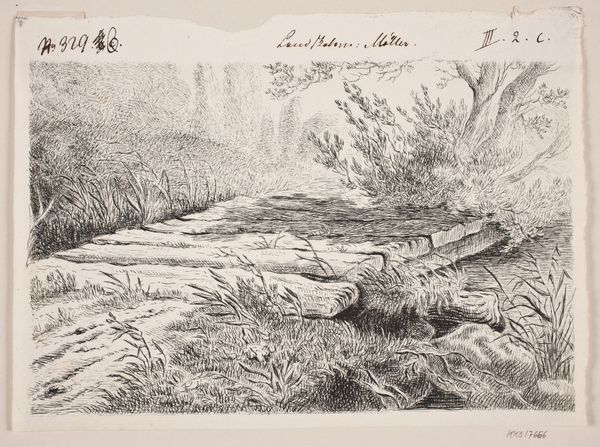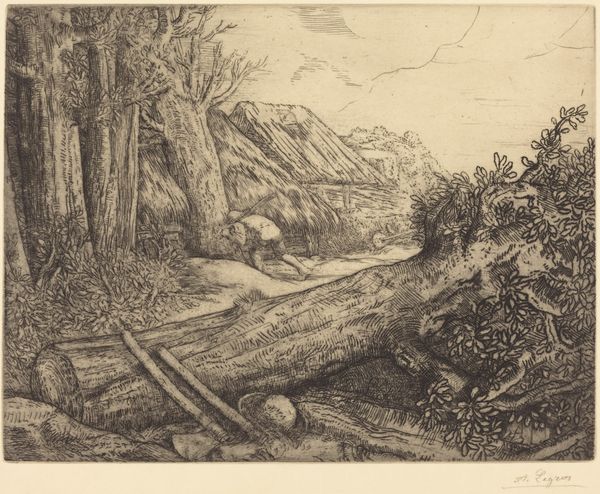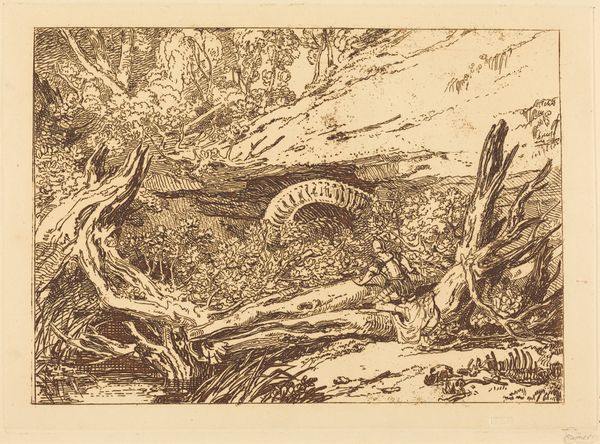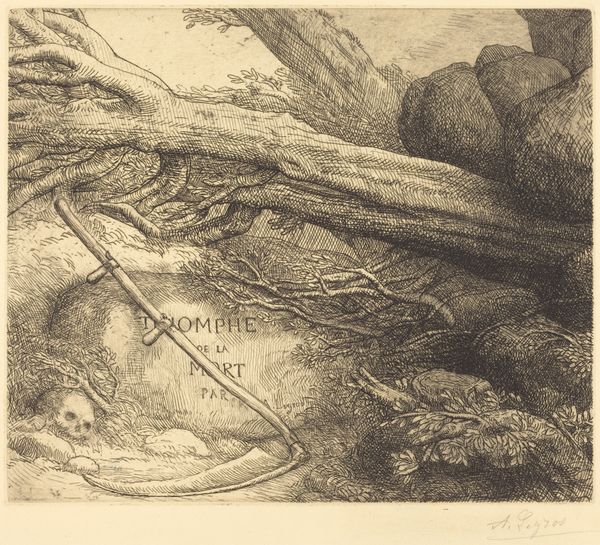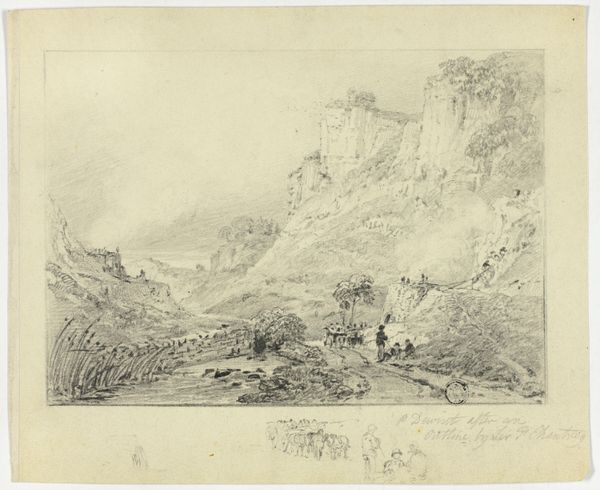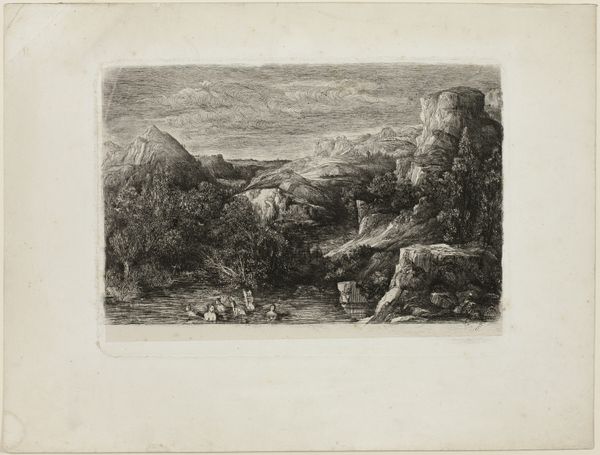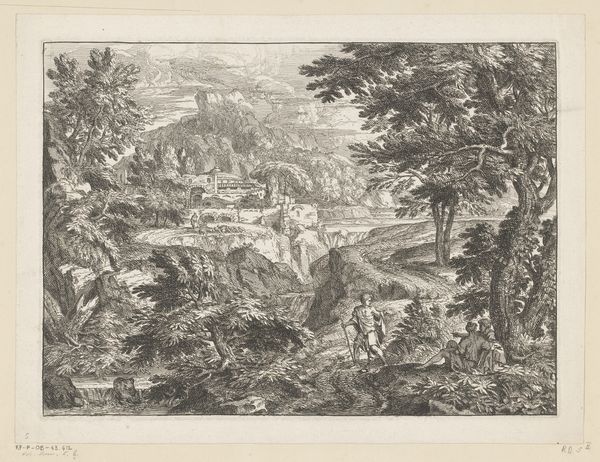
The Fountain, No. 1: The Wounded Indian Slaking His Death Thirst 1843
0:00
0:00
drawing, pencil
#
drawing
#
landscape
#
romanticism
#
pencil
#
watercolor
Dimensions: 7 x 9 3/4 in. (17.8 x 24.8 cm)
Copyright: Public Domain
Curator: Before us is "The Fountain, No. 1: The Wounded Indian Slaking His Death Thirst," a pencil drawing from 1843 by Thomas Cole. Editor: Immediately, a sense of melancholy washes over me. The muted tones, the stillness of the water, and the shadowed woods—it evokes a deep sense of loss. Curator: It’s powerful how Cole's Romanticism channels a critique of westward expansion and the displacement of indigenous peoples. The image itself presents an elegy. Consider the lone figure: He's not presented in heroic triumph but in utter desperation, his final act a thirst quenched by the very land being taken from him. Editor: The "fountain" itself, then, becomes symbolic. It represents not only a source of life but also the stolen lifeblood of a culture, doesn't it? The surrounding, almost engulfing, woods amplify that solitude; it feels isolating. Even the water's reflective quality emphasizes his isolation. Curator: Precisely. Think about the historical context: Cole created this during a period of intense national debate over Indian Removal policies. So the artwork serves as a pointed political commentary. His landscapes consistently became a space for mourning and reckoning with American progress. Editor: Visually, the bending tree in the middle feels burdened; even nature is impacted by this drama. I see a sort of visual echo in the figure—his bowed form mirrors the shape of the leaning tree, a parallelism that emphasizes his fatigue. Curator: Yes, it's as though the natural world is participating in his suffering. In Cole’s oeuvre, landscapes are always moral stages. His deliberate composition positions us, the viewers, as witnesses—potentially complicit ones—to this tragedy. Editor: It really pushes the question: What symbols of past atrocities do we actively engage with today? Thinking about collective memory is critical, even essential, with difficult works like this one. It forces reflection. Curator: Absolutely. The beauty and the sorrow exist simultaneously, reminding us of the complexities inherent in America's narrative. Editor: And prompting a somber reminder of perspectives so frequently disregarded, still today.
Comments
No comments
Be the first to comment and join the conversation on the ultimate creative platform.
